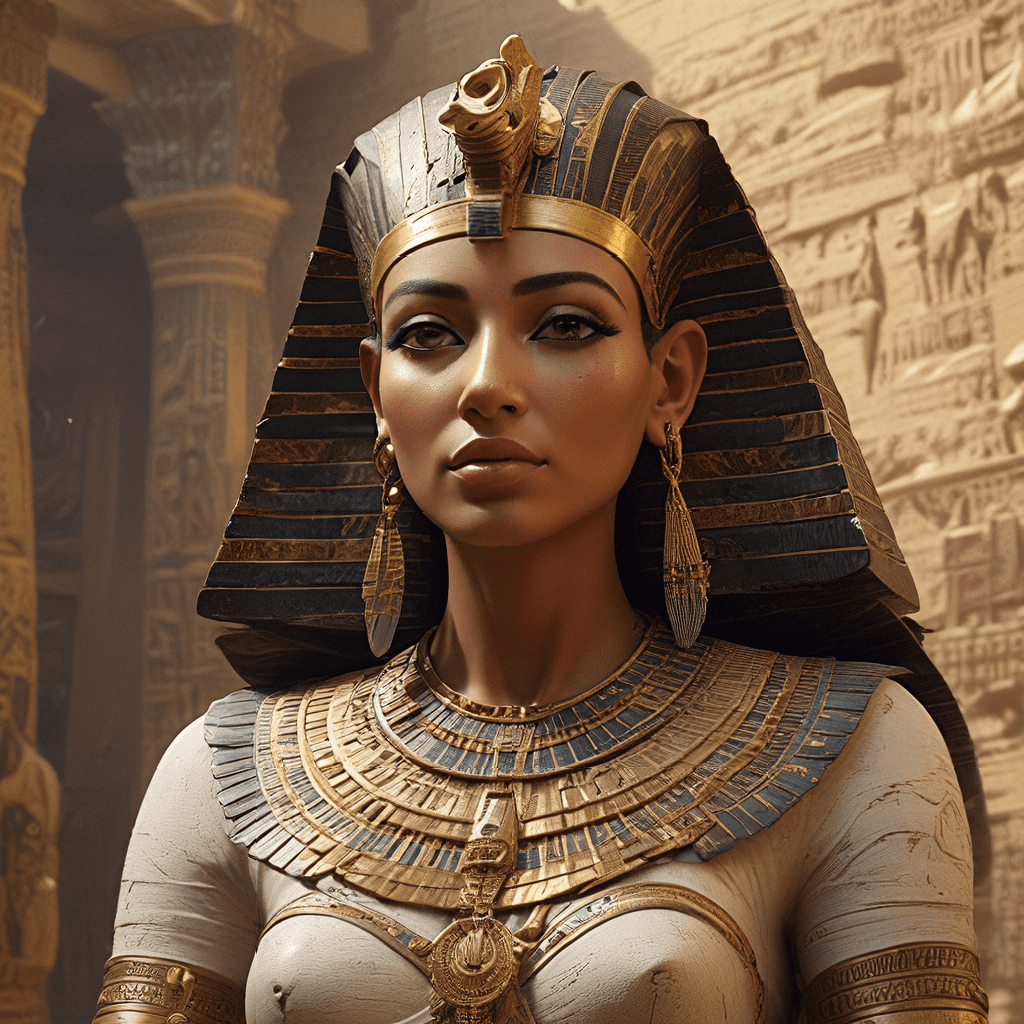1. Introduction: The Eternal Journey
Ancient Egyptians believed that death was not an end, but a transition to a new realm: the afterlife. This belief was deeply ingrained in their culture, influencing their daily lives, their art, and their elaborate burial practices. The Egyptians created a complex and detailed system of beliefs surrounding the afterlife, picturing it as a place of eternal joy and peace for those who lived a virtuous life. This article will explore the Egyptian concept of the afterlife and compare it to similar beliefs in other cultures, highlighting similarities and differences.
2. The Egyptian Journey: A Detailed Examination
The Egyptian afterlife was a journey that began with the moment of death. The deceased soul, called a “ka,” was believed to be judged by Osiris, the god of the underworld, in a ceremony known as the “Weighing of the Heart.” Anubis, the jackal-headed god, guided the soul through the underworld, while Thoth, the god of wisdom, weighed their heart against a feather representing truth and justice. If the heart was lighter than the feather, the soul was allowed to enter the afterlife, but if it was heavier, the soul would be devoured by a monstrous beast called Ammit.
The “Book of the Dead,” a collection of spells and instructions, was buried with the deceased. It provided guidance for the soul’s journey through the underworld, offering spells and prayers to overcome obstacles and appease the deities. After the Weighing of the Heart, the soul would journey through the “Duat,” the underworld, facing a series of trials and temptations. If successful, the soul finally reached “Aaru,” the Field of Reeds, a paradise where the sun god Ra sailed across the sky in an eternal day.
3. The Greek Underworld: A Journey of Shadows
The ancient Greeks also believed in an afterlife, but their concept differed significantly from the Egyptians. The Greek underworld, ruled by Hades and his queen Persephone, was a place of shadows and silence, not a place of eternal joy. The souls of the dead crossed the River Styx, a river separating the world of the living from the underworld, on a ferry guided by Charon, a grim ferryman who demanded payment for his service.
The Greek underworld was divided into different realms: Elysium, the abode of the blessed, where heroes and favored souls spent eternity in peace; Tartarus, a place of punishment for the wicked; and the Fields of Asphodel, where the souls of ordinary people lived in a neutral state. Several notable figures were associated with the Greek underworld. Sisyphus, condemned to eternally push a boulder uphill, symbolized the futility of human endeavors. Tantalus, forever thirsty and hungry, yet unable to quench his thirst or satisfy his hunger, represented the torment of insatiable desire. Orpheus, the musician who attempted to rescue his beloved Eurydice from the underworld, symbolized the power of love and the limits of human capability.
4. Norse Mythology: Valhalla and the Afterlife of Warriors
Norse mythology also presented a distinct view of the afterlife. Valhalla, a great hall ruled by the god Odin, was reserved for warrior heroes who died gloriously on the battlefield. The Valkyries, female figures who chose the fallen warriors, brought them to Valhalla, where they feasted and trained for the final battle, Ragnarok, which would bring about the end of the world.
Another afterlife in Norse mythology was Folkvangr, ruled by the goddess Freya. Folkvangr was a beautiful and peaceful realm, reserved for those who died naturally or in childbirth. While Valhalla was filled with the roar of battle, Folkvangr was known for its music, its beautiful gardens, and its peaceful atmosphere.
5. The Buddhist Wheel of Reincarnation: Rebirth and Karma
Buddhism, a major world religion, offers a different perspective on the afterlife. Buddhists believe in the concept of Samsara, a continuous cycle of birth, death, and rebirth. This cycle is driven by karma, the law of cause and effect, which dictates that our actions have consequences that will impact our future lives. Every moment of our lives creates karma, shaping our future rebirths.
The Four Noble Truths, fundamental to Buddhist teachings, describe the existence of suffering, its cause, its cessation, and the path leading to its cessation. The Eightfold Path, a practical guide for achieving liberation from suffering, provides specific steps to cultivate wisdom, morality, and concentration. The ultimate goal of Buddhism is to achieve Nirvana, a state of enlightenment and liberation from the cycle of rebirth, a state of peace and perfect freedom from suffering.
6. Celtic Mythology: The Otherworld and the Land of the Sidhe
Celtic mythology presents a fascinating concept of the Otherworld, a realm existing alongside the human world, but accessible only through specific pathways or with the aid of supernatural beings. This Otherworld was a magical place where time flowed differently, where the rules of the human world did not apply, and where both beauty and danger could be found. The Tuatha de Danann, a race of deities, ruled the Otherworld, and it was said that they held great power over the natural world.
The Otherworld was also home to the Sidhe, or fairies, magical creatures who were often associated with nature and the cycles of life and death. The Sidhe were known for their beauty and their mischievous nature, and they were often associated with magic and the supernatural. They could be helpful or harmful, depending on their mood and the actions of humans. The Otherworld and its inhabitants remained a key element of Celtic mythology, embodying the mystical and the unknown.




